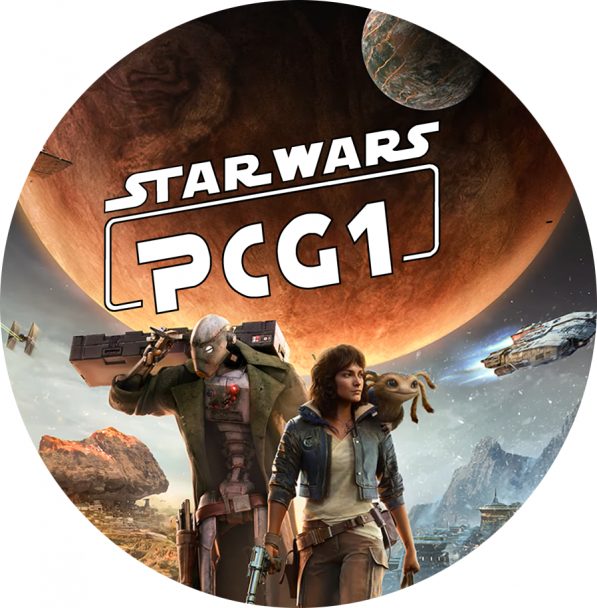Last week marked the fifth anniversary of Oculus Connect, a virtual reality developer conference held by the Facebook-owned headset maker. In 2016 and 2017, Oculus used Connect to tease a self-contained, high-end VR headset that it called Santa Cruz. And in 2018, it finally put a lot of questions around Santa Cruz to rest. We know the headset’s final name (the “Oculus Quest”), its price (a surprisingly cheap $399), and its approximate shipping date (spring of next year).
But the Oculus Quest announcement has raised its own set of questions, some strictly practical, others sweeping and open-ended. At Connect, I talked to Oculus after trying the Oculus Quest, looking for hints about the future of virtual reality.
Oculus has mostly presented the Oculus Quest as a downscaled Rift or a personal gaming console, like a Nintendo Switch for virtual reality. Product VP Nate Mitchell told The Verge that its ideal audience will be “gamers who have been waiting for their moment to get into VR, but haven’t quite had the right avenue” — more specifically, gamers who haven’t already bought an Oculus Rift or similar high-end headset like the HTC Vive.
But at Connect, the most exciting Quest-based experience was an “arena-scale” six-player deathmatch game that took advantage of the headset’s unique capabilities. Theme park-style virtual reality experiences have gotten traction even as overall hardware sales have cooled: “hyper-reality” company The Void partnered with Disney to launch Star Wars and Marvel-themed installations, and more arcade-esque competitors like Zero Latency have expanded their reach over the past couple of years.
Since heavy backpack PCs are a distinctly unpleasant part of these experiences, getting rid of them would improve a market that’s already fairly established — and it could make the Oculus Quest’s success less reliant on winning over a lot of new VR users.
The Oculus Quest includes a specific mix of features you can’t currently find in any major consumer headset: it’s self-contained and wireless, includes room-scale (or bigger) inside-out tracking, and ships with high-end motion controllers. It supports a completely different set of experiences than low-end mobile headsets, while removing the hassle of setting up a tethered device.
This is a pretty intuitive formula, so other headset makers, including HTC and Sony, could easily be working on their own versions. There’s also persistent speculation that companies like Apple might jump into VR. The closest mainstream equivalent might be Google and Lenovo’s self-contained Mirage Solo headset with its experimental motion controllers — but based on our experience, the Mirage Solo just isn’t very good yet. So if we don’t see a direct challenger soon, the real question might be whether casual VR fans or newcomers think the Oculus Quest’s design is exciting and different enough to make it feel like a new kind of headset, or if it ends up seeming like a variation on the Oculus Rift.
Mitchell says that even after the Oculus Quest launches, the Rift will still be the “gold standard,” offering “the highest immersion, highest fidelity — it’s probably the best place to be” for VR gamers. And based on descriptions from Mitchell and Oculus CTO John Carmack, some existing Rift games simply won’t work well on Oculus Quest.
But if the distance in quality isn’t too great, most VR developers will probably target the Oculus Quest as a baseline, since it has the same features and controls as the Rift. In this case, the Rift would only be really necessary for professionals who need unlimited computing power and enthusiasts who want top-notch graphics and frame rates, similar to the larger audience for gaming PCs.
We’ve had good experiences with the Oculus Quest so far, so that idea sounds pretty plausible. On the other hand, we’ve only tried a few carefully chosen experiences in a controlled setting. If the Oculus Quest’s limits turn out to be more severe, we might see a situation more like the Nintendo Switch — which can only support graphically intensive console games like Wolfenstein II with visible tradeoffs, and clearly shines with simpler titles. And that could keep the Rift at the center of Oculus’ ecosystem for years to come.
It’s really, really tough to make money by selling games and movies to VR’s tiny user base, even for creators who target every single headset. Oculus has tried to offset that by directly funding developers and filmmakers; among other things, it runs a diversity-focused incubator program called Oculus Launch Pad and a program for new VR developers called Oculus Start. Mitchell says Oculus’ 2019 slate — which includes projects like Stormlands, an open-world game from Spider-Man developer Insomniac — represents its biggest investment so far.
Even so, there are plenty of reasons developers might give VR a pass, to the detriment of the whole ecosystem. A legitimately mass-market headset would help change that — but we don’t know if that’s what Oculus has created yet.
Mark Zuckerberg described the Oculus Quest as an “ideal VR system” that capped off the company’s first generation of VR headsets, alongside the Oculus Rift and Oculus Go. Mitchell says he doesn’t quite agree with that framing. “This generation still has a long shelf life ahead of it,” he says, noting that Oculus is constantly making software tweaks to improve Rift and Oculus Go performance. Similarly, he says the company will support the Quest for “a super long time.”
It’s still reasonable to suspect that Oculus is done making the sort of significant but incremental updates we’ve seen since the original Rift was announced — like full motion tracking, hand controllers, and other features that made this generation of VR more than a fancy screen. Oculus has almost always had some kind of codenamed prototype device on the horizon, but unlike in the past two years, it didn’t announce a big new hardware project at Connect.
So what comes next? The most prominent hints come from chief scientist Michael Abrash, who took the stage at Connect to speculate about a futuristic fusion of virtual and augmented reality, showing off a concept design featuring ultra-thin glasses that could either augment or block out the world. To be clear, Abrash is known for intentionally making big moonshot predictions that don’t reflect the state of present-day tech. But given how much Facebook talks about (mostly phone-based) AR, it’s plausible that these two flavors of mixed reality will come together — maybe successfully, maybe not.

